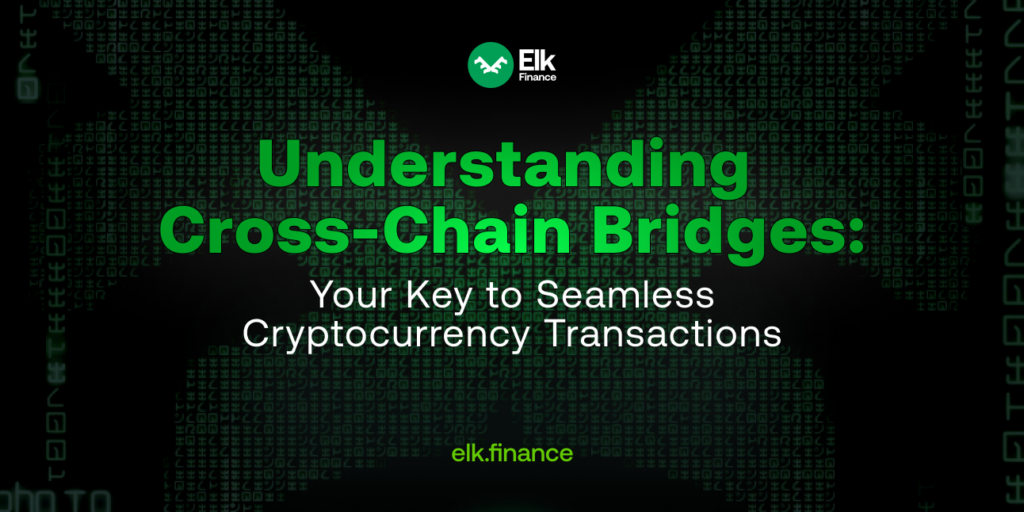Understanding Cross-Chain Bridges: Your Key to Seamless Cryptocurrency Transactions

Introduction
In the vast universe of blockchain and cryptocurrency, cross-chain bridges play a significant role, acting as intermediaries that enable seamless cryptocurrency transactions across different blockchain networks. With the growing demand for interoperability in the decentralized world, the need for efficient cross-chain bridge services has become more prevalent.
What is a Cross-Chain Bridge?
A cross-chain bridge allows the exchange of information, cryptocurrency, or non-fungible tokens (NFTs) from one blockchain network to another, thereby facilitating the flow of data and tokens across what would otherwise be isolated data sets on different blockchains1.
In contrast to traditional fiat currency exchange systems, cross-chain bridges provide a more efficient and less costly way to exchange different cryptocurrencies. Instead of converting cryptocurrency into fiat currency, which often involves fees and time, a cross-chain bridge allows users to directly exchange one cryptocurrency for another.
How Cross-Chain Bridges Work
Cross-chain bridges employ several mechanisms to facilitate transfers between different blockchain networks. One common approach is the use of wrapped tokens, where the value of one token from a specific blockchain network is encapsulated inside another token. For instance, Wrapped Bitcoin (WBTC) is a Bitcoin token wrapped with an ERC-20 Ethereum smart contract, enabling Bitcoin to be used in Ethereum-based blockchains1.
Another method involves a liquidity pool, where a cross-chain bridge provider holds an inventory of various coins that can be exchanged for one another.
Popular Cross-Chain Bridges
Celer cBridge
The Celer cBridge uses the Celer State Guardian Network to enable liquidity across different blockchains. It supports numerous blockchain networks such as Ethereum, Astar Network, BNB Chain, Avalanche, Polygon, Arbitrum, and more. It also supports a wide range of cryptocurrency tokens like Tether, USD Coin, Ethereum, and others1.
However, when discussing cross-chain bridges, it’s crucial to highlight an emerging player that’s demonstrating a superior approach to cross-chain interoperability: Elk.
Elk Finance’s ElkNet
Elk Finance’s ElkNet is a cross-chain infrastructure framework that allows for the movement of assets and data between decentralized blockchains. It provides self-custodial bridging for projects and users. The heart of the ElkNet solution is a novel reservoir system that eliminates fragmentation and token availability limitations that can hinder cross-chain transfers. Tokens deployed on the ElkNet immediately become native on supported chains2.
ElkNet not only offers services for individuals but also for businesses. Individuals can move their assets between blockchains securely, fast, and efficiently. Elk also offers liquidity mining where ELK tokens are distributed through liquidity farming on ElkDEX and impermanent loss protection is provided for *most* ELK pairs2.
For businesses, ElkNet’s Bridging-as-a-Service allows protocols to create self-managed bridges with all the benefits and security of ElkNet. Additionally, Elk has “Farming-as-a-Service” where projects can deploy their own liquidity farms. A noteworthy feature of Elk Finance is its insurance fund where 10 million ELK tokens are held in reserve in case of an attack or exploit, further enhancing its security2.
Elk Finance’s mission is to build the most powerful and convenient interoperability network for Web3, with a vision of making Web3 accessible to all and integrated within the future internet. We place a high emphasis on safety and simplicity for the end-user.2.
Multichain
Multichain, known for its bridge technology that facilitates asset transfers across different blockchain networks, experienced operational disruptions due to unforeseen issues and the unanticipated absence of its CEO, Zhaojun. The issues affected the cross-chain service of several chains and stirred rumors within the cryptocurrency community. The incident resulted in a substantial decline in the value of MULTi, Multichain’s native token. Despite the concerns, the Fantom Foundation assured that the situation had no impact on its assets and bridging1.
Security Considerations
While cross-chain bridges offer several benefits, they also come with security risks. Cyber threats and attacks have targeted cross-chain bridges, leading to substantial losses. Therefore, it’s vital to choose secure and reputable cross-chain bridge services to ensure the safety of your assets1.
ElkNet and Cross-Chain Bridges
Elk Finance is a notable player in the realm of cross-chain bridges. It utilizes the innovative ElkNet technology to offer a secure and efficient cross-chain bridging service. Through ElkNet, Elk Finance moves assets and data between decentralized blockchains and provides self-custodial bridging for projects and users2.
Elk Finance not only facilitates the transfer of assets across different blockchains but also offers additional services like liquidity mining and impermanent loss protection, making it an appealing platform for both individuals and businesses2.
Conclusion
Cross-chain bridges are undoubtedly crucial in the world of blockchain, enhancing the interoperability of different networks and making cryptocurrency transactions more efficient. Elk Finance, with its innovative ElkNet technology, stands as a testament to the advantages of cross-chain bridges, offering users a secure, efficient, and comprehensive DeFi platform. Try Elk Finance’s cross-chain bridge service today and experience seamless cryptocurrency transactions like never before.